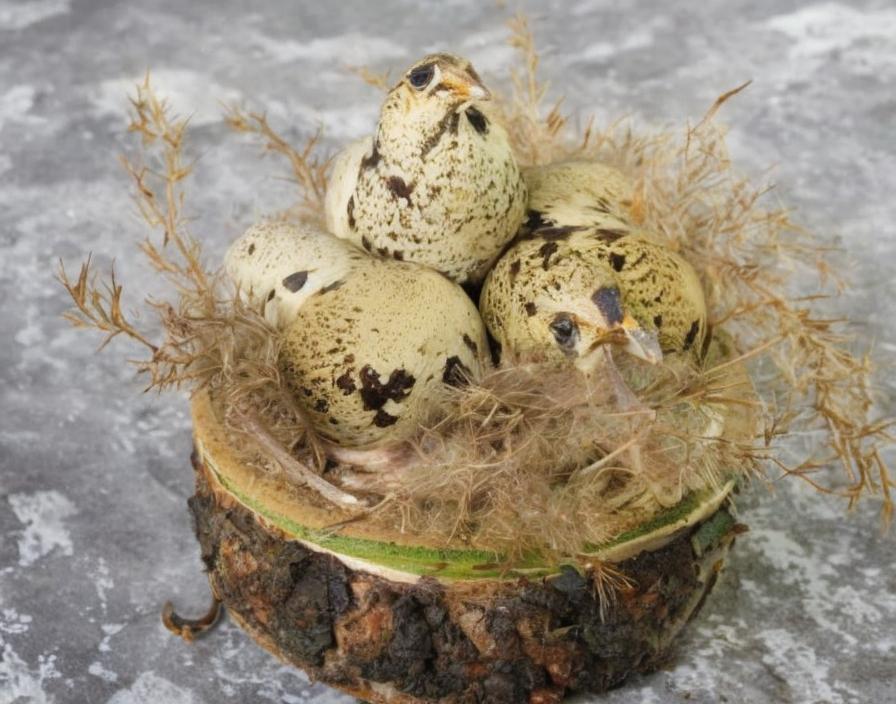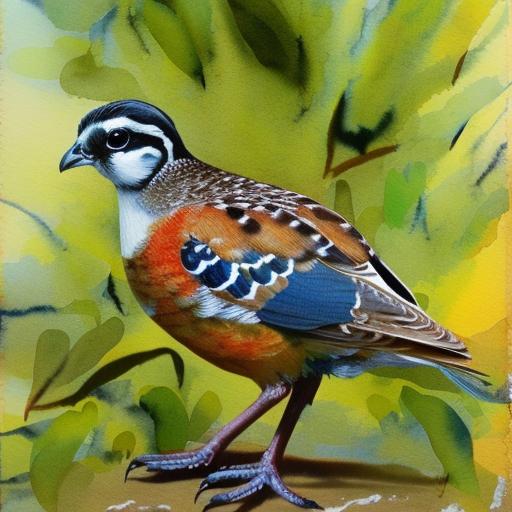Quails are small, ground-dwelling birds that belong to the pheasant family. There are several different breeds of quail, each with its own unique characteristics and traits. Some of the most popular quail breeds include the Coturnix quail, Bobwhite quail, Gambel’s quail, and California quail. Each breed has its own distinct coloration, size, and egg-laying capabilities. For example, the Coturnix quail is known for its prolific egg-laying abilities, while the Bobwhite quail is prized for its delicious meat. Understanding the different breeds of quail is important for anyone looking to raise these birds, as it can help you choose the right breed for your specific needs and goals.
Quail breeds also vary in terms of their temperament and behavior. Some breeds are more docile and easy to handle, while others are more skittish and prone to flight. Additionally, certain breeds may be better suited for specific climates or environments. For example, the Gambel’s quail is well-adapted to arid desert regions, while the California quail thrives in brushy areas with plenty of cover. By understanding the unique characteristics of each quail breed, you can make informed decisions about which breeds are best suited for your particular circumstances.
Key Takeaways
- Understanding quail breeds is important for selecting and managing mixed quail breeds.
- When selecting quail breeds for mixing, consider factors such as temperament, size, and egg production.
- Introducing quail breeds should be done gradually to minimize stress and aggression.
- Managing mixed quail breeds involves providing adequate space, food, and shelter for each breed.
- Breeding mixed quail breeds can result in unique and diverse offspring with desirable traits.
Selecting Quail Breeds for Mixing
When it comes to mixing quail breeds, there are several factors to consider in order to create a successful and harmonious flock. One important consideration is the size and temperament of the different breeds. It’s important to select breeds that are similar in size and temperament in order to minimize aggression and fighting within the flock. For example, mixing a large, aggressive breed with a smaller, more docile breed can lead to bullying and stress among the birds.
Another factor to consider when selecting quail breeds for mixing is their egg-laying capabilities. If you are primarily interested in raising quail for their eggs, you’ll want to choose breeds that are known for their prolific egg production. Additionally, some breeds may be better suited for meat production, so if that is your primary goal, you’ll want to select breeds that are known for their meat quality and quantity.
It’s also important to consider the climate and environment in which you will be raising your mixed quail flock. Some breeds may be better adapted to certain climates or environments, so it’s important to choose breeds that will thrive in your specific location. By carefully selecting quail breeds for mixing based on size, temperament, egg-laying capabilities, and environmental suitability, you can create a harmonious and productive mixed flock.
Introducing Quail Breeds
Introducing different quail breeds to one another can be a delicate process that requires careful planning and consideration. It’s important to introduce the birds gradually and in a controlled manner in order to minimize stress and aggression. One effective method for introducing quail breeds is to use a “buddy system,” where pairs or small groups of birds from different breeds are introduced to one another in a neutral environment. This allows the birds to become familiar with one another without feeling threatened or overwhelmed.
Another important aspect of introducing quail breeds is providing adequate space and resources for the birds. It’s essential to ensure that there is enough space for all of the birds to move around freely and establish their own territories. Additionally, providing multiple food and water sources can help prevent competition and aggression among the different breeds.
It’s also important to monitor the birds closely during the introduction process and be prepared to intervene if any aggression or fighting occurs. In some cases, it may be necessary to separate certain individuals or groups in order to prevent injury or stress. By taking a gradual and controlled approach to introducing quail breeds, you can help ensure a smooth and successful integration of the different birds.
Managing Mixed Quail Breeds
Managing a mixed flock of quail breeds requires careful observation and attention to the dynamics within the flock. It’s important to monitor the birds closely for any signs of aggression or bullying, as well as to ensure that all of the birds have access to food, water, and shelter. Providing ample space for the birds to move around freely can also help minimize stress and aggression within the flock.
In addition to managing the social dynamics within the flock, it’s important to provide appropriate care and nutrition for each breed. Some breeds may have specific dietary or environmental needs, so it’s important to tailor your management practices accordingly. For example, some breeds may require higher protein levels in their diet, while others may need additional shelter or protection from extreme weather conditions.
Regular health checks and preventative measures can also help ensure the well-being of a mixed flock of quail breeds. Monitoring for signs of illness or disease, as well as implementing biosecurity measures, can help prevent the spread of illness within the flock. By carefully managing the social dynamics, care, and nutrition of a mixed flock of quail breeds, you can help ensure the health and productivity of your birds.
Breeding Mixed Quail Breeds
Breeding mixed quail breeds can be an exciting and rewarding endeavor, but it requires careful planning and consideration. When breeding mixed quail breeds, it’s important to select breeding pairs that complement each other in terms of size, temperament, and genetic traits. This can help ensure that the offspring inherit desirable characteristics from both parent breeds.
It’s also important to provide appropriate nesting areas and conditions for breeding pairs in order to encourage successful reproduction. This may include providing nesting boxes or areas with plenty of cover and privacy for the birds to lay their eggs. Additionally, ensuring that breeding pairs have access to a balanced diet and proper nutrition can help support healthy egg production and successful hatching.
Once breeding pairs have produced offspring, it’s important to monitor the young birds closely and provide appropriate care and nutrition as they grow. This may include separating different age groups or providing supplemental feed as needed. By carefully managing the breeding process and providing appropriate care for offspring, you can help ensure the success of breeding mixed quail breeds.
Benefits of Mixing Quail Breeds

There are several benefits to mixing quail breeds in a flock. One of the primary benefits is genetic diversity, which can help improve overall health and resilience within the flock. By mixing different breeds, you can introduce a wider range of genetic traits and characteristics, which can help reduce the risk of inbreeding and genetic disorders.
Mixing quail breeds can also lead to increased productivity within the flock. For example, by combining breeds known for their prolific egg-laying abilities with those known for their meat quality, you can create a more versatile and productive flock. Additionally, mixing different breeds can help create a more visually diverse and interesting flock, with a wider range of colors and patterns among the birds.
Another benefit of mixing quail breeds is the potential for creating unique hybrid offspring with desirable traits from both parent breeds. This can be particularly valuable for breeders looking to develop new varieties or improve specific traits within their flock. By carefully selecting breeding pairs and managing the breeding process, you can create hybrid offspring with a wide range of desirable characteristics.
Challenges of Mixing Quail Breeds
While there are many benefits to mixing quail breeds, there are also some challenges to consider. One potential challenge is managing aggression and social dynamics within a mixed flock. Some quail breeds may be more aggressive or territorial than others, which can lead to bullying or fighting within the flock. It’s important to carefully monitor the birds and intervene if necessary in order to prevent injury or stress.
Another challenge of mixing quail breeds is managing different dietary or environmental needs within the flock. Some breeds may have specific nutritional requirements or environmental preferences, so it’s important to tailor your management practices accordingly. This may include providing separate feeding areas or shelters for different groups of birds.
Additionally, breeding mixed quail breeds can present its own set of challenges. Careful selection of breeding pairs and management of offspring is essential in order to ensure successful reproduction and healthy offspring. It’s important to be prepared for potential complications or issues that may arise during the breeding process.
By carefully considering these challenges and implementing appropriate management practices, you can help ensure a successful and harmonious mixed flock of quail breeds.
If you’re interested in mixing quail breeds, you might also want to consider the best kind of coop for chickens. Poultry Wizard has a helpful article on choosing the right coop for your chickens, which can provide valuable insights into creating a suitable environment for your poultry. Understanding the importance of a well-designed coop can help ensure the health and happiness of your quail and other poultry breeds.
FAQs
What are quail breeds?
Quail breeds refer to the different varieties or types of quail that exist, each with its own unique characteristics and traits.
Can different quail breeds be mixed together?
Yes, different quail breeds can be mixed together. However, it’s important to consider factors such as size, temperament, and purpose (meat or eggs) when mixing quail breeds.
What are the potential benefits of mixing quail breeds?
Mixing quail breeds can lead to hybrid vigor, which may result in healthier and more robust birds. It can also introduce new traits and characteristics that may be desirable for specific purposes, such as egg production or meat quality.
Are there any potential drawbacks to mixing quail breeds?
One potential drawback of mixing quail breeds is that it can lead to unpredictable outcomes in terms of traits and characteristics. Additionally, some breeders prefer to maintain purebred lines for specific traits or for showing purposes.
How should quail breeds be mixed to minimize negative outcomes?
When mixing quail breeds, it’s important to carefully select the breeds based on their compatibility in terms of size, temperament, and purpose. It’s also important to monitor the resulting offspring and select for desirable traits in future generations.
What are some popular quail breeds that are commonly mixed together?
Some popular quail breeds that are commonly mixed together include Coturnix quail breeds such as Jumbo Brown, Tuxedo, Italian, and Pharaoh quail. These breeds are often mixed to create hybrid vigor and desirable traits for meat and egg production.
Meet Walter, the feathered-friend fanatic of Florida! Nestled in the sunshine state, Walter struts through life with his feathered companions, clucking his way to happiness. With a coop that’s fancier than a five-star hotel, he’s the Don Juan of the chicken world. When he’s not teaching his hens to do the cha-cha, you’ll find him in a heated debate with his prized rooster, Sir Clucks-a-Lot. Walter’s poultry passion is no yolk; he’s the sunny-side-up guy you never knew you needed in your flock of friends!







